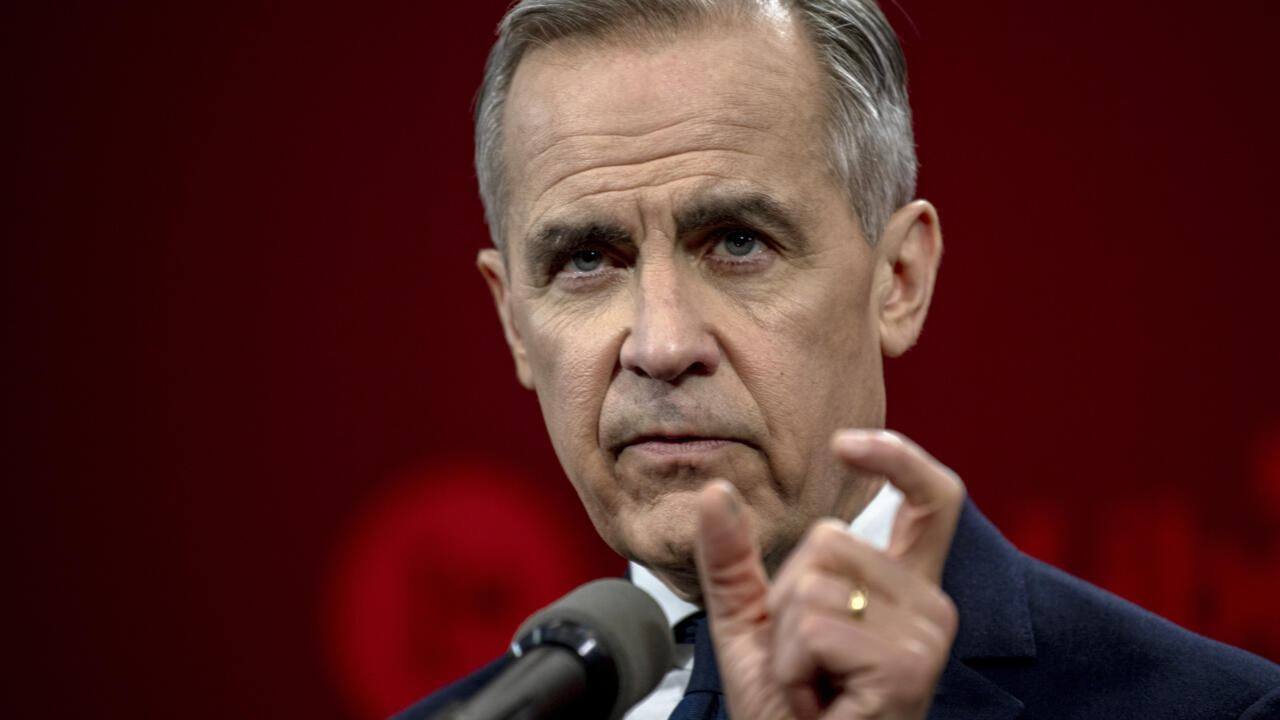Popular Articles




In recent years, the global economy has been facing a large -scale challenge: how to combine financial growth and environmental preservation. In such conditions, the name Mark Carney has gained special significance. He, the former head of the Bank of England and the special ambassador of the UN of Climate and Finance, turned the idea of stability from a theoretical concept into a practical tool for banks, investors and regulators. His activity proved that the transition to a more environmentally friendly and socially responsible model is not only possible, but also beneficial. In this material, we will consider the key stages of the evolution of Karni as the author and practitioner of innovations in the field of "green" finance. We will analyze how its statements and reports became a starting point for the formation of new standards, and then outgrew into real actions that can change the financial system as a whole.
The first mention of the need to take into account environmental and social factors in investment activities appeared at the end of the 20th century. However, the topic gained wide popularity only in the 21st century, when, against the background of a growing environmental load, classic risk assessment methods have ceased to reflect all possible threats. Extreme weather phenomena, natural disasters and public demonstrations for a clean planet became a reminder for the financial sector, that ignoring the climatic factor can turn into significant losses. Carni, having unique experience in central banks and international organizations, has timely recognized this trend. He proposed to integrate “green” risks into the framework of financial supervision to give banks tools for a more accurate assessment of potential losses and stabilize the system in the long run.
For the first time, the professional community turned to the idea of environmental responsibility in finance through the prism of fair investment and social bonds. Large funds in the early 2000s included social projects in the portfolio, but without a single methodology, such efforts were disparate. Industry working groups, small international coalitions of scientists and practitioners, who analyzed how climatic risks affect the profitability of assets. These studies laid the base for the creation of more serious normative initiatives, which were subsequently supported by Mark Carney. His contribution was to combine disparate ideas into a single strategy, which made it possible to formulate clear goals and methods for the implementation of sustainable financing at the state level.
One of the key achievements of Mark Carney was the initiative to develop a single set of standards for revealing climatic risks. In 2015, having become part of the G20 financial stability council, he initiated the creation of the Climate-RELEETED Financial Disclosures (TCFD) council of financial stability. The purpose of this body is to develop recommended practices for companies and financial institutions, covering what risks are associated with climate change and what measures are taken to minimize them. TCFD reports quickly became a guide for hundreds of organizations around the world: from large corporations to small investment funds. Thanks to this approach, clarity appeared in assessing potential financial costs and motivation for more pure investment.
An important element of the success of TCFD has become the openness and flexibility of recommendations. Participants could adapt them to the specifics of their market and geographical position, as well as take into account only relevant parameters. For greater coverage of the standards, specialists from different sectors were involved: insurance companies, investment funds, technological startups and environmental organizations. Such a wide representation ensured the relevance of recommendations and formed a strong methodological basis for the further development of sustainable finances. Carni managed to combine the interests of business, social structures and regulators, creating a self -regulation mechanism, which does not require constant tough supervision from state bodies.
It is important to note that the success of any initiative for sustainable development largely depends on the breadth of international cooperation. Carni actively interacted with the central banks of different countries, contributed to the exchange of information and advanced experience. In 2019, at a meeting of the Bank of International Calculations, he presented the report “The Status of Green Finance”, where he described progress in the regulation of the “green” economy and outlined steps for the coming years. Under his auspices, panel discussions, seminars and working groups were held in which representatives of the IMF, the World Bank, the European Central Bank and the National Financial Stability Committee participated.
A special place in international initiatives was taken by the NGFS (Network for Greening The Financial System), uniting more than eighty central banks and supervisory authorities. Carney advocated the active development of this platform, proposing to conduct joint stress tests with the inclusion of climatic scenarios. Thanks to this approach, it became possible to assess the stability of banking systems under the influence of extreme weather phenomena and transitional risk associated with a change in prices for carbon -combined assets. As a result, the countries were able to develop more accurate policies of stimulating “green” investments and gradually reduce dependence on the hydrocarbon economy.
The transition to practice has become the following logical stage after the publication of recommendations and reports. Banks and companies focused on long -term growth began to introduce sustainable financing methods. They introduced “green” bonds, credit lines for energy efficiency projects and “brown lists” of assets subject to consistent division. A huge role was played by the British regulatory framework modernized under the leadership of Karni, when the Bank of England ordered systemically significant financial institutions to report on its climatic risks and scenarios.
Among the practical examples we can distinguish projects of large corporations that have switched to the production of “green” bonds from the moment of submission of recommendations. These bonds made it possible to raise billions of dollars for the construction of wind and solar power plants, the modernization of transport infrastructure and the creation of energy -efficient residential complexes. At the same time, specialized platforms appear that simplify the process of evaluating environmental impact-from online portals to mobile applications with AI analytics. Such technological progress indicates that “green” financial instruments become an integral part of the investment landscape.
The emphasis on sustainable finances brings not only environmental benefits. Carni tirelessly emphasized that rational accounting of climatic risks is associated with increasing profitability and a decrease in operational costs. Investors who analyze long -term prospects began to see less volatility in “green” assets, and business are additional opportunities for innovation. Attraction of capital to projects on renewable energy sources or modernization of infrastructure has become simpler and more cheap. Special indexes and ratings of ESG (Environmental, Social, Governance) appeared, which raised the attractiveness of stable companies in the eyes of institutional investors.
An additional advantageous consequence was the expansion of access to financing for socially oriented projects. Funds oriented to the community were able to attract investments under the guarantees of banks that adapted their products to ESG principles. This made it possible to support small companies, starting water purification projects, forest restoration and environmental tourism. The development of the "green" labor market has also accelerated: new professions have appeared related to the assessment of a carbon trace, certification and audit of environmental projects.
Despite the obvious progress, the process of transition to a “green” economy is faced with a number of problems. Firstly, there is a scatter in the approaches of various jurisdictions: legislative requirements and regulatory norms vary greatly from the country to the country. Secondly, many enterprises do not yet see direct commercial benefits from adaptation to environmental standards, which slows down the introduction of new practices. Thirdly, the deficiency of quality data and a different risk assessment methodology complicate the work of analysts and regulators. Carni noted the importance of continuous improvement of monitoring and accounting systems, as well as the need to create a global knowledge base available to all market participants.
Another important obstacle was the opposition from traditional industries, dependent on the hydrocarbon economy. Lobbitists of the coal and oil industry exert pressure on politicians, restraining the introduction of rigid standards and restrictions. In addition, the lack of financing for the transition period and the lack of convincing political signals create uncertainty. Carni advocated the introduction of “carbon taxes” and quotas trade for emission, but this idea requires wide international support, otherwise “carbon leaks” will arise when production is simply transferred to countries with milder regulation.
The vision of Karni for the coming years includes three main priority tasks. The first is the formation of unified global standards for evaluating and disclosing environmental risks in order to ensure the comparability of data at the international level. The second is the development of “green” financing technologies, such as digital platforms and blockchain applications for the verification of environmental information. And the third is an active involvement of small and medium -sized businesses, which often did not have enough resources to introduce complex practices of sustainable development. For these purposes, he proposes to strengthen the interaction of the central banks, regulators and the private sector, as well as expand educational programs and trainings.
On the horizon, new forms of financing are already seen, such as “green” derivatives and synthetic assets tied to environmental indicators. Experimental programs for the emission of digital green bonds based on blockchain received support for several central banks. The exchange of knowledge between startups, large institutional players and the state can accelerate the introduction of progressive solutions. In the future, the world economy will gain a more flexible and adaptive model that can quickly respond to climatic and social shocks.
The activity of Mark Carney in the field of sustainable financing demonstrates how the purposeful efforts of one person can launch large -scale systemic changes. From the substantiation of the need to take into account climatic risks to the development of universal standards and their implementation in the work of central banks and international institutions - its path is an example of effective interaction between analytics and practice. Thanks to these efforts, the financial industry is gradually reoriented for long -term goals, and economic incentives are intertwined with environmental and social tasks.
Today, the world has a difficult but solved task - to preserve the planet and ensure stable growth. The Mark Carney approach, based on a combination of strict rules, transparency and innovative tools, shows that sustainable finances cease to be utopia. They become a new standard of business strategy and state policy, contributing to the creation of a strong foundation for future generations.












